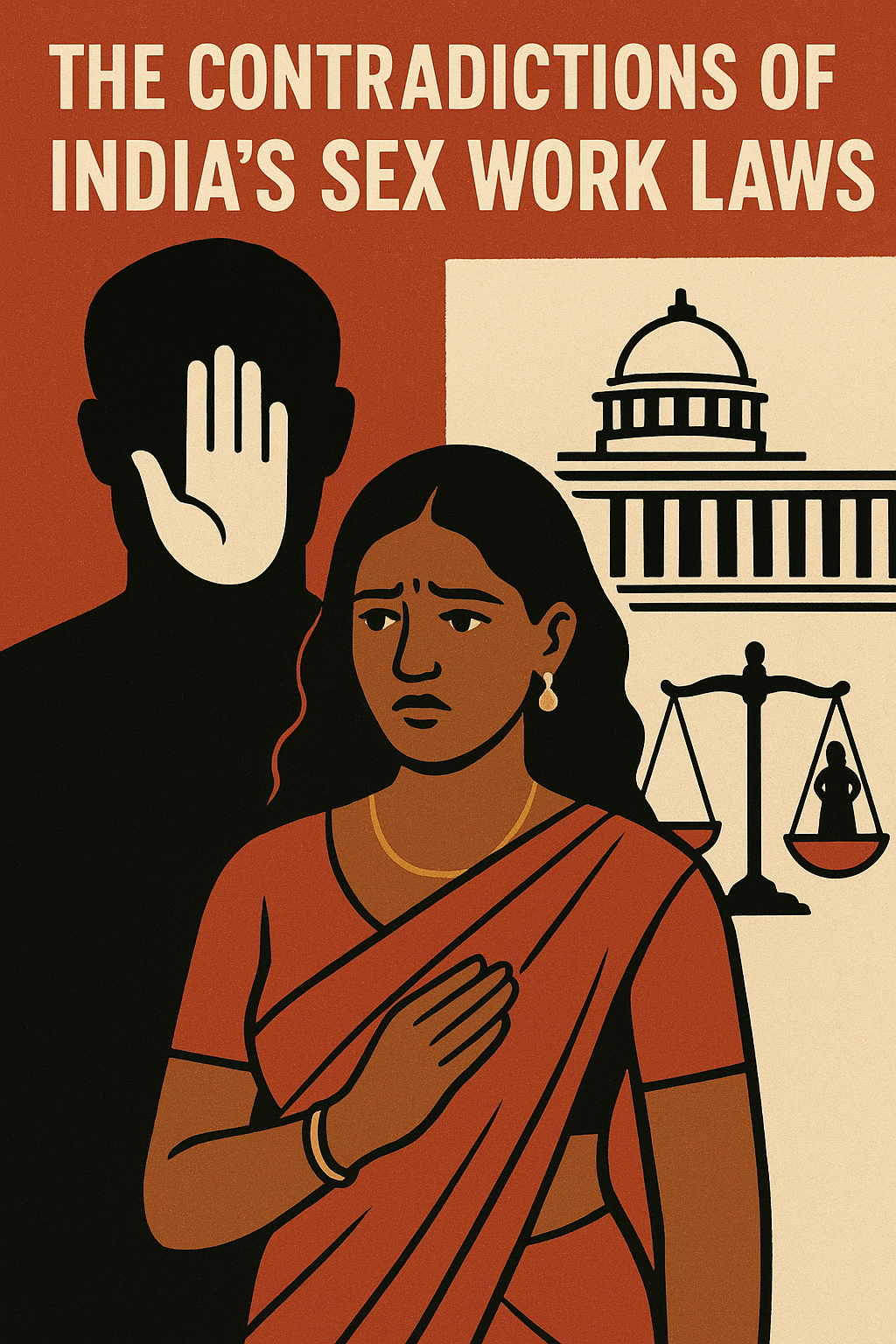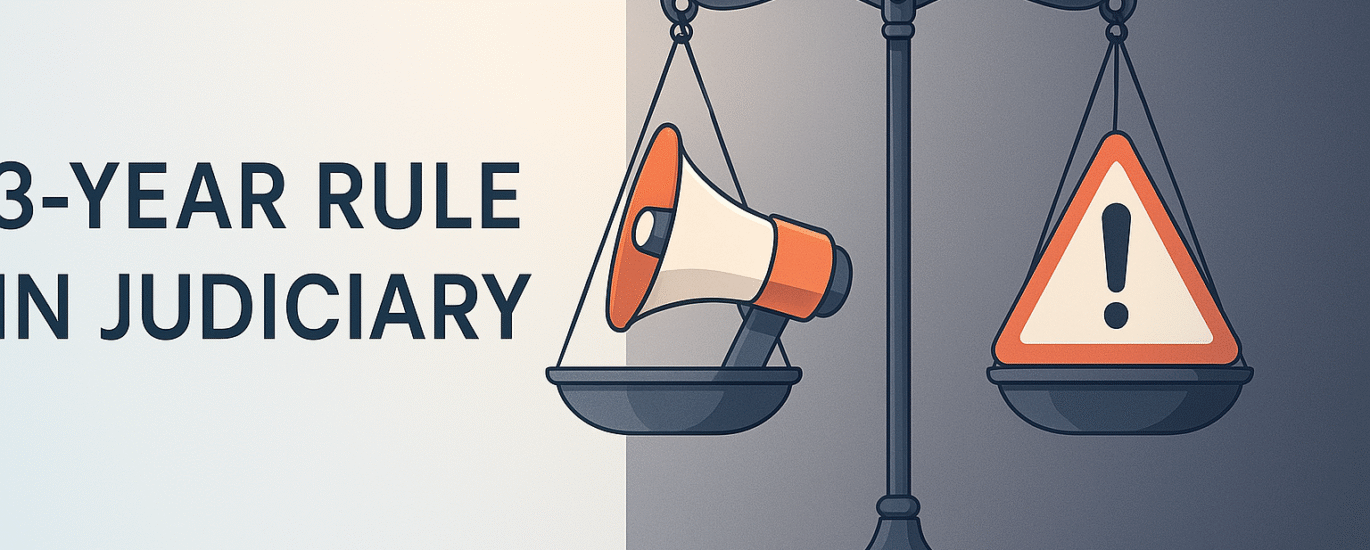



Author: Anshika Chaudhary
University: Lloyd School of Law
Becoming a judge is a cherished dream for many law students—symbolizing justice, authority, and public service. For women, the judiciary offers not just prestige but also rare professional security and respect. Until recently, this dream was accessible to any law graduate ready to work hard. However, the Supreme Court’s recent judgment mandating three years of legal practice to appear for the judicial services exam (PCSJ) has altered this path—especially for women. Though intended to ensure practical experience, the rule imposes disproportionate challenges on female aspirants. Women already face systemic hurdles in the legal profession, including safety concerns, lack of mentorship, and workplace bias. This additional requirement delays their entry and could discourage many from pursuing the judiciary altogether. What was once a straightforward, merit-based journey now feels uncertain and exclusionary for countless women dreaming of the bench.
The recent judgment upholding the 3-year practice requirement is based on the idea that aspiring judges should first experience the legal system from within. According to the Court, practical exposure to courtroom procedures, client interaction, and legal drafting helps future judges understand the real functioning of courts. The argument is that this experience makes them more competent and grounded in their decision-making. In theory, this may sound like a logical requirement. But the problem lies in its assumption that all candidates come from a level playing field. That’s far from true. For many young men, particularly those from privileged or legally connected families, three years of practice may be inconvenient, but not impossible. For women—especially those from middle-class or rural backgrounds—the cost is not just inconvenience. It’s their future.
Most women who complete a 5-year integrated law course do so in their early to mid-twenties. At that stage, they are full of enthusiasm, determination, and academic confidence. The judiciary is often their first and only goal. Earlier, they could start preparing for PCSJ exams right after graduation. But with this rule, they are now required to spend three years in legal practice—often underpaid, rarely structured, and without any guarantee of success afterward. By the time those three years are completed, these women are in their mid-to-late twenties. This is the phase where, in many Indian households, marriage and family expectations begin to mount. The pressure is not just emotional—it’s social, cultural, and in many cases, non-negotiable. Women are told, “You’ve studied enough. Now settle down.” And if she resists, she’s often left to fight the system alone—with little support.
What does “practice” mean in reality for most fresh graduates? It usually means working under a senior lawyer or a judge as a clerk, assistant, or junior associate. These roles involve long hours, menial tasks, and very little pay. In urban cities, one might get a stipend of ₹5,000 to ₹10,000 per month—if lucky. In smaller towns, many work without any compensation, hoping that the experience will somehow help them clear the exam later. This is a huge price to pay. A woman who has already studied for five years is now expected to spend three more years working with almost no income. Meanwhile, her peers in other professions—engineering, medicine, corporate law—are already financially independent, supporting families, and building stable lives. But a judicial aspirant? She is in limbo—neither a judge nor a secure professional, just endlessly “preparing to prepare.”
No Guarantees, No Safety Net
The most painful truth about this rule is that even after completing the three years, there’s no assurance of clearing the exam. Judiciary exams are among the most competitive in India. Even the brightest students fail after multiple attempts. So what happens then? A woman who has spent years in underpaid practice, sacrificed corporate job opportunities, and postponed personal life decisions now finds herself at a crossroads. She’s already in her late twenties. She hasn’t built a strong independent litigation profile because she was focusing only on eligibility. Corporate firms may no longer consider her a “fresh” candidate. And the pressure to marry or “settle down” only increases.This rule doesn’t just delay careers. It breaks them.
One of the most limiting parts of the 3-year rule is how narrowly it defines “legal experience”. Only courtroom practice or working directly under a judge counts. Teaching law, working in NGOs, doing corporate legal work, or even research—all valuable legal experiences—are not considered valid. This leaves young women with very few options. Even if they want to earn a decent salary, support their families, or gain exposure in other legal fields, they can’t—because none of that will help them qualify for the PCSJ exam. So they’re forced to stay in a narrow, often exploitative practice environment—not out of choice, but compulsion.
There is a far more sensible, humane alternative: let all law graduates appear for the judiciary exam, and provide extensive, practical training to those who get selected. Judicial academies already exist for this purpose. The post-selection training can be expanded to include courtroom practice, procedural law, and case handling. This ensures that only the truly deserving are trained—but without forcing thousands to go through three years of low-paid practice just for a shot at appearing. This would have kept the door open for passionate, talented women—while still maintaining high standards for the judiciary.
Real Voices, Real Impact
The 3-year practice mandate may seem like a procedural change on paper, but for thousands of aspiring candidates, especially women, it has hit like a storm. The emotional and practical impact is far deeper than policymakers or even courts may have realized. Roli Gangwar, an aspirant, shared her frustration with The Quint: “I’ve spent the past three years preparing for the exam, and with this change, I will now have to wait another three years to even sit for it.” She further added: “Can you imagine someone from a lower or a middle class background… afford spending nearly a decade of their life without any income, just to be eligible?”
Another candidate quoted by The Print from Uttarakhand said: “People say this judgment is gender‑neutral, but it’s not. It’s deeply gendered… Most women can’t just walk into district courts and start practicing. Our families won’t allow it. We don’t have the networks.” From Jabalpur, one young woman, visibly disheartened, explained: “I have wanted to be a judge since Class 6… I have to explain to them that I’ll be 30 before I start earning. That’s not something most Indian families accept, especially for girls.” These are not isolated voices. They represent the lived experiences of women across the country—whose dreams are now tangled in delays, financial uncertainty, and rising societal pressure. For many, this judgment didn’t just change a rule; it changed their entire future.
From a constitutional lens, the rule may appear neutral. It applies to everyone—men and women, rich and poor. But the impact is not equal. The Supreme Court rightly said that practical experience is important, but it overlooked how that experience is far more accessible to some than to others. Women face more societal pressure, more financial limitations, and more professional barriers. They don’t have the same luxury of “waiting it out.” For many, those three years may as well be a wall. And here lies the problem: rules that don’t recognize social reality can never deliver real justice.
We Need More Women in Judiciary—Not Fewer
India already has a massive gender gap in the judiciary. Only about 15% of High Court judges are women. Even in the lower judiciary, where women have slightly better representation, progress has been slow. We should be encouraging more women to join, not making it harder. Women judges bring empathy, perspective, and diversity to the bench. They understand issues like domestic violence, sexual harassment, and child rights from lived experience. Their presence is not just symbolic—it improves the quality of justice. But how can we expect women to rise to the top when we’re blocking them at the entry level?
Policy Must Be Logical, Not Punitive
If the aim is to ensure quality, we must focus on training, not punishment. Why should thousands of talented graduates be made to work for years with no certainty, just to be allowed to take an exam? Instead, we should build stronger judicial training academies, offer mentorship programs, and perhaps even provide stipends to those who choose to practice law full-time under a structured internship model. There are many ways to ensure quality without pushing people out.
The 3-year rule may have been introduced with noble intentions—but its impact is anything but noble. It is cutting off the judiciary as a career option for thousands of deserving women. It is reinforcing old stereotypes—that women should hurry to marry, not build careers. That financial independence must wait. That dreams can be deferred without cost. This is not just a rule. It’s a message. And right now, that message tells women: ‘you’re not welcome here’. We must change that message. The judiciary is not just a system of laws. It’s a reflection of the society it serves. And if it shuts out women at the first step, how can it ever claim to deliver justice? Let us build a system where every young woman with a dream and determination can say: “Yes, I can become a judge”—and actually mean it.
References
Date of Judgment: May 20, 2025.
Source:
SCC OnLine (Citation): 2025 SCC OnLine SC 518
Quotes used from women aspirants from Uttarakhand and Jabalpur.
URL: [https://theprint.in/judiciary/sc-ruling-is-forcing-rethink-among-judicial-services-aspirants-is-it-even-worth-the-struggle/2671345/](https://theprint.in/judiciary/sc-ruling-is-forcing-rethink-among-judicial-services-aspirants-is-it-even-worth-the-struggle/2671345/)
Quote used from aspirant Roli Gangwar on financial pressure and extended wait.
URL: [https://www.thequint.com/my-report/supreme-court-order-mandatory-legal-practice-setback-aspiring-candidates](https://www.thequint.com/my-report/supreme-court-order-mandatory-legal-practice-setback-aspiring-candidates)
Statistic on gender disparity: Only about 15% of High Court judges are women in India.
URL: [https://www.indiajusticereport.org/](https://www.indiajusticereport.org/)